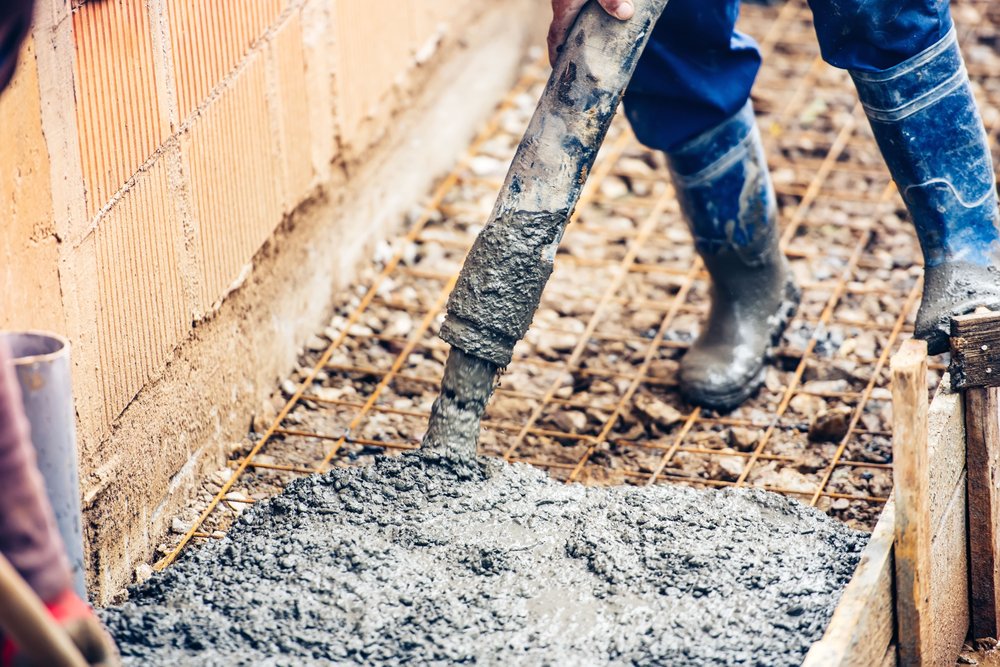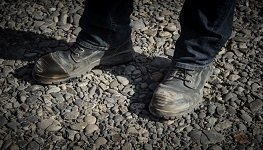
Cement
Cement-based concrete is widely used and contains extremely aggressive and hazardous chemicals.

Introduction
Cement-based concrete is widely used and contains extremely aggressive and hazardous chemicals. However, often not enough thought is given to the potential harm it can do to those laying it.
Health risks from cement
Concrete burns
Wet concrete is a strong alkaline chemical solution which is very hazardous to skin tissue. Victims are often unaware even after several hours that they are being burnt because alkaline chemicals damage nerve endings first. Concrete burn injuries are extremely painful and can take months to heal. Some treatments can require surgical treatment in the form of skin grafts. In extreme cases, the medical complications associated with the burn may lead to amputation or even death.
Irritant contact dermatitis
Irritant contact dermatitis is a skin condition caused by the chemicals that make up concrete. The particles that makeup cement are abrasive and can injure the skin. If the skin is not given sufficient time to recover, irritant dermatitis can develop. This condition is found in many concrete workers.
Symptoms include:
- Stinging.
- Itching.
- Redness.
- Swelling.
- Cracking.
- Blisters.
- Scaling.
- Fissures.
- Bleeding.
Cuts or wounds heal very slowly and infections are likely.
Allergic contact dermatitis
Allergic contact dermatitis is a skin condition caused by an allergic reaction to concrete. Cement-based concrete contains hexavalent chromium which causes allergies and, in some cases, cancer. The cumulative effect of daily exposure may take years to cause a reaction; however when it does, it is irreversible. Allergic contact dermatitis is a common reason for concrete workers to leave the industry.
Symptoms include:
- Swelling.
- Redness.
- Oozing.
- Cracking.
- Stinging.
- Itching.
- Blisters.
- Scaling.
Controlling concrete risks
To control concrete risks, consider the following easy methods:
Personal protective equipment (PPE)
Reduce the risk of skin contact by wearing:
- Full-length overalls with long sleeves and trouser legs that won’t let dust or water in.
- Waterproof boots.
- Waterproof gloves.
- Eye protection.
Any clothing that has been contaminated by concrete should be washed before it is used again. Do not allow contaminated clothing to touch skin directly.
Hygiene
Dermatitis can occur without skin being in contact with concrete contamination, so it is vital that workers wash their hands before visiting the toilet and eating. The best solution is to provide a large sink – big enough for workers to submerge their forearms in – with warm water, soap and clean towels to get the concrete off. If running water is not an option, the next best alternative is to store clean water in your work vehicle. Avoid using abrasive cleaning products or alcohol wet wipes as they can damage the skin and increase the risk of injury - a mild soap is best.
Health monitoring
Ensure all workers that may be exposed to concrete understand the risks and the necessary precautions to take. It’s recommended you get professionals to conduct regular skin exams and encourage workers to check themselves for signs and symptoms of concrete skin contact dermatitis.
Wastewater
Wastewater produced when working with concrete is toxic - it takes one million litres of water to dilute one litre of alkaline back to a safe pH level (between six and seven). Use these four steps to ensure runoff doesn’t pollute waterways, potentially killing fish and plants:
- Check the weather and pick a dry day.
- Contain the wastewater by making a bunded area.
- Capture the wastewater in the bunded area.
- Clear the wastewater by pumping it into a container like a 1000 litre cube.
Emergency action for concrete burns
If there is any suspicion that a concrete burn has occurred, seek help from emergency services.
businesses are Site Safe members.
SiteWise members.
people trained every year.